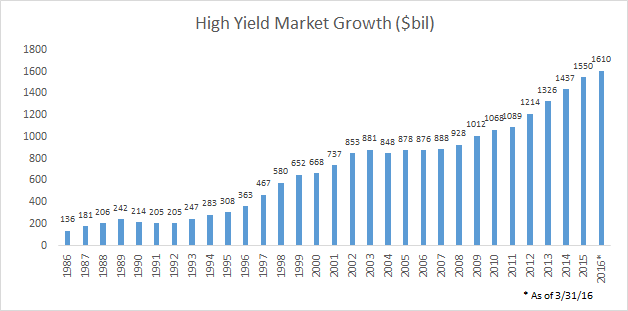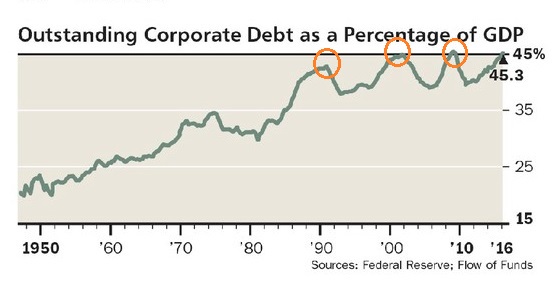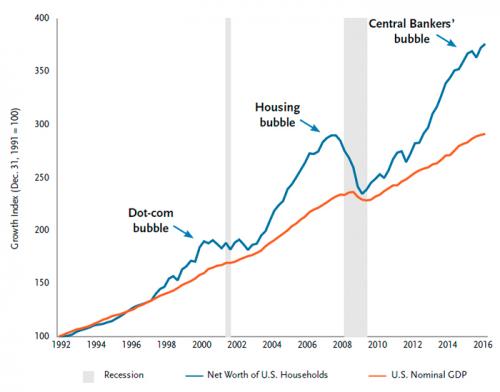An economy begins to grow, picks up steam, peaks, slows down, and eventually contracts. The process is known as the business cycle – an inevitable progression from expansion to recession to renewal and recovery.
Central bank policy makers have been trying to eliminate recessions from the picture since the 1990s. Some folks believe that their prescriptions – lowering overnight lending rates, buying assets with electronic credits, etc. – have been effective. After all, the three economic expansions from July 1990 to June 2009 averaged nearly eight years whereas the previous average period of economic growth chimed in closer to six years.
On closer inspection, however, what did the United States Federal Reserve actually achieve by pushing recessionary forces further out into the future? They did not stop recessions from occurring outright. On the contrary. While they may occur with less frequency, they are occurring with more ferocity.
Consider the Fed’s free-spirited monetary accommodation in the late 1990s. At the latter stages, Fed policy encouraged the boom and the bust surrounding dot-com stock mania in 2000, while the deeply painful 2001 recession still came to fruition. Then the Fed did it again. They depressed rates for far too long in the mid-2000s, fueling the ridiculously speculative excesses in the U.S. housing market. The Fed may have pushed the recession further out into the future, but they only created a more toxic environment for the Great Recession of 2008 to breed.
Perhaps ironically, some investors seemed to have learned very little from either 2000 or 2008. And the central banks clear across the globe? They’ve learned even less. They continue to push policies like zero percent interest rates, asset purchases with electronic money credits, negative interest rates, none of which have actually done a lot for economic performance itself. What have they done? Encouraged extreme speculation and exorbitant asset prices that allow for a portion of respective populations to feel wealthier. At least for now. At least until the credit boom comes unglued.
Like a business cycle’s expansion that cannot last indefinitely, a credit cycle also transitions from growth to boom to slowdown to bust. If a homeowner has very little skin in a mortgage (and many have a meager 3% down) – the loan is likely to end in default should one household wage earner lose a reasonable paying job. More problematic in the current environment? Poor credit risk corporations whose bonds are often called “junk” eventually find themselves in default.

In fact, the high yield market is not completely accounted for in the chart above. There is another $1 trillion in high yield floating rate loans such that one-third of all corporate debt in existence is “junk.”
Even the parabolic rise of high-grade (not high-yield) investment grade corporate debt is worrisome. It has doubled in size during the current economic recovery, putting into play the probability that all corporations are leveraged to the hilt.
These are the precise circumstances that led to Tad Rivelle, Chief Investment Officer of Fixed Income at TCW – to decry the insanity of corporate leverage today. “The credit-fueled expansion inevitably comes to a bad end,” Rivelle admonished. “We’ve lived this story before.”
On the specifics of leverage, Morgan Stanley notes that total company debt sits at a record 2.4x collective earnings. Meanwhile, corporate debt as a percentage of GDPat 45.3% is on par with peak debt ratios from the previous three recessions.

“Oh, but Gary,” you protest. “Corporations would be foolish not to borrow at these incredibly low rates. It is practically free money for them.” My response here is twofold. First, unless you believe that borrowing costs will remain favorable indefinitely – at least as favorable as they are today – these debts will have to be rolled over in the near future. If spreads between corporates rise at a time when those debts need to be rolled over, if terms are less favorable, particularly for higher-yielding corporations, the terms on new debt may break the back of those beleaguered corporations.
Indeed, one may have missed the S&P Global Ratings report on corporate defaults just two months ago. At 100 companies (on the nose), the number represented a 50% jump in defaults over 2015 as well as the highest number reached since 2009. And that’s with the favorable borrowing terms of today. Or perhaps one did not pay attention to what economists at the United Nations expressed about the prospect of epic defaults across the world, particular in emerging economies. Zero rate policy and quantitative easing (QE) in the developed world resulted in a flood of cheap credit to developing nations, many of whose companies and governments are in no position to pay back debts.
Secondly, I would add, the high debt loads, even if they remain serviceable, did not result in productive use of the borrowed funds. Capital expenditures for long-term growth? Credit Lyonnais Securities Asia (CLSA), a brokerage and investment group focused on institutional brokerage, noted that CapEx at U.S. companies sits at a 60-year low. And it’s not like those corporations still have those dollars in cash either; they spent most of it on dividends and stock share buybacks.
In fact, CLSA stripped out the top 1% of American companies because those 1%-ers hold 50% of all corporate cash. They discovered that cash holdings for 99% of U.S. companies is 6% lower in 2016 than in 2015. Meanwhile, debt has grown at 80% since 2007, creating a compounding burden for debt repayment.
Are we not at a point where we might express concern about the sixth consecutive quarter of year-over year declines in S&P 500 earnings? Should investors completely ignore a benchmark that trades at 25x trailing 12 months earnings and is 50% overvalued on a forward earnings basis going back to 1871?
Perhaps you are inclined to think that corporate profit performance, as well as the economy itself, is about to turn around. Unfortunately, our own Federal Reserve does not believe this to be the case. They now expect a single rate hike in 2016 (0.625% down from 0.875% just three months ago) and a meager two rate hikes in 2017 (1.125% down from 1.625% just three months ago). How do earnings suddenly grow like gangbusters when we have year-over-year GDP growing at 1.2% – a level typically associated with the onset of a recession?
Is it true that ultra-low interest rates have bolstered asset prices substantially? Sure. Is it justification for paying ever-increasing asset prices going forward, when many valuation measures suggest current prices sit in the 99th percentile of valuations already. I seriously doubt it.
Isn’t it possible, if not increasingly probable, that the bulk of the investment community will revisit the entire premise behind the central bank-inspired wealth effect? Specifically, why in the heavens should people keep paying up for stocks and real estate when, time and again, the net worth of U.S. households typically reverts back to the GDP mean?

The credit cycle will contract and it may do so much sooner than people think. What should you do about it? Take advantage of the most opportunistic asset class in existence: cash. My clients have 25% in cash/cash equivalents for increased flexibility when volatility arrives. In particular, it helps to ensure a greater return of capital, as oppose to focusing solely on the return on capital. And when a crises of confidence in central banks does hit, you’re likely to see a rare opportunity to acquire a highly coveted asset at a bargain price. That cannot occur unless you’ve set aside the cash to pounce.
Disclosure: Gary Gordon, MS, CFP is the president of Pacific Park Financial, Inc., a Registered Investment Adviser with the SEC. Gary Gordon, Pacific Park Financial, Inc, and/or its clients June hold positions in the ETFs, mutual funds, and/or any investment asset mentioned above. The commentary does not constitute individualized investment advice. The opinions offered herein are not personalized recommendations to buy, sell or hold securities. At times, issuers of exchange-traded products compensate Pacific Park Financial, Inc. or its subsidiaries for advertising at the ETF Expert web site. ETF Expert content is created independently of any advertising relationships.
